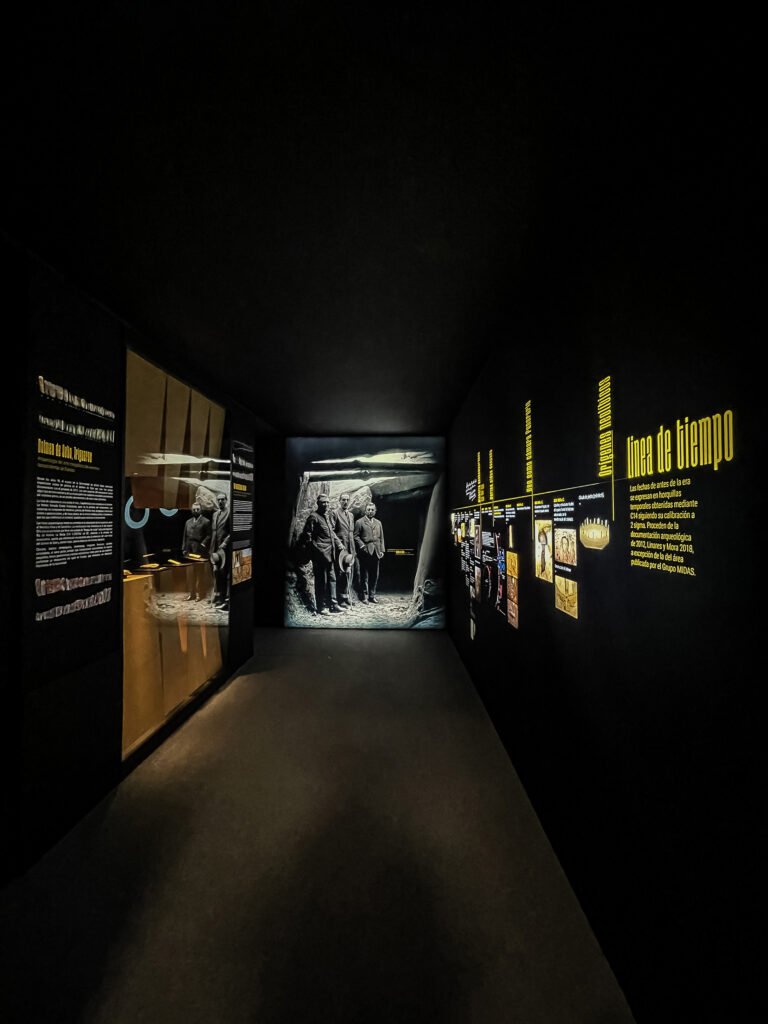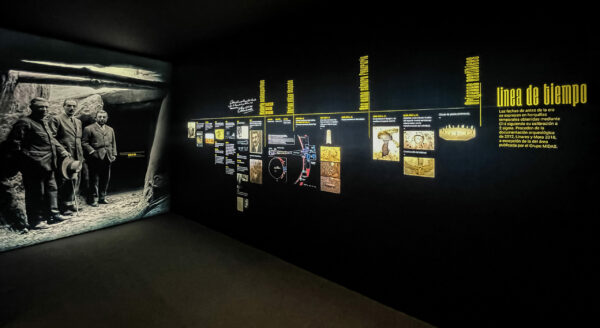
MUVI
Promoter: Villena City Council Date:2024 Categories: Permanent Exhibition Design, Archaeology
Location: Villena, Alicante Museological project: Laura Hernández Alcaraz Museographic design: Rocamora Diseño y Arquitectura Graphic design: Luis Sanz Audiovisual design: Rocamora Diseño y Arquitectura Texts: Jesús García Guardiola, Laura Hernández Alcaraz Photographs: Laura Hernández Alcaraz Execution: Patrimonio Inteligente, Adara Comunicación
Villena Museum Exhibits: An Innovative Museographic Approach
The new Museum of Villena (MUVI) offers a museum experience that combines design, archaeological collections and technology to tell the rich history of Villena and its people. Our studio has developed a museographic design that not only exhibits historical objects, but also contextualizes them so that visitors can understand and appreciate their cultural and temporal significance.
Villena History Room – José M.ª Soler
The visit begins in the room dedicated to the most influential figure in the archaeology of Villena in the twentieth century. This space presents objects from the old José Mª Soler Municipal Archaeological Museum, along with many others that have now been restored and are being exhibited for the first time.
A timeline shows events in Villena with other contemporaries from other cultures around the world, as well as key episodes in the history of mankind. The tour, which begins fifty thousand years ago with hunter-gatherer societies and Neolithic artifacts, advances to the Bronze Age, highlighting the importance of this era with more than thirty sites in its territory. The exhibition progresses through the Iberian world in Villena until its Romanization, to continue with the medieval Villena, the Islamic castles and the Marquisate. Later, the urban expansion during the Renaissance and Baroque periods, represented with jewels of the Virgen de las Virtudes and works by the painter José García Hidalgo on loan from the Museo Nacional del Prado. The room concludes with relevant figures in politics and music, such as Joaquín M.ª López, Ruperto Chapí and Lola Vitoria.
Villena Treasure Room
The Treasure of Villena room contains the most important collection of the museum, an exceptional set declared of Cultural Interest and considered the most important set of prehistoric crockery in Europe, comparable only to that of Mycenae. Discovered in 1963, it has been in the Archaeological Museum “José María Soler”, under the protection of the city council. Now, the Museum of Villena has an exclusive apse-shaped room to guard these extraordinary pieces.
Temporary Exhibition Hall
The temporary exhibition hall presents the exhibition “One hundred and fifty of 15,000. Villena, an ethnographic look”, which illustrates the collective memory of Villena between 1858 and 1958. The exhibition begins with the arrival of the railroad in 1858, marking the beginning of economic modernization and industrialization, highlighting the export agriculture, wine, alcohol, furniture, chairs and footwear. The old aristocracy and the rising bourgeoisie were the main beneficiaries. These elements, together with the importance of water, constitute the identity symbols of contemporary Villena.
The museographic approach of the Villena Museum transforms the visit into an educational and exciting experience. Each room and exhibit is designed to interact with visitors, offering multiple levels of information and forms of interaction. This not only preserves and presents the history of Villena, but also actively involves the public, making the Museum of Villena a museographic reference at local, regional and state level.






